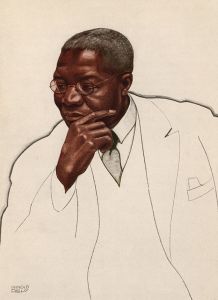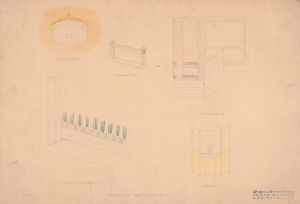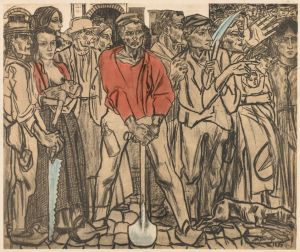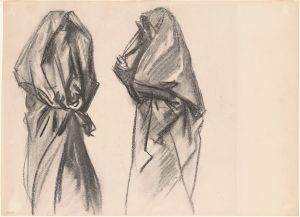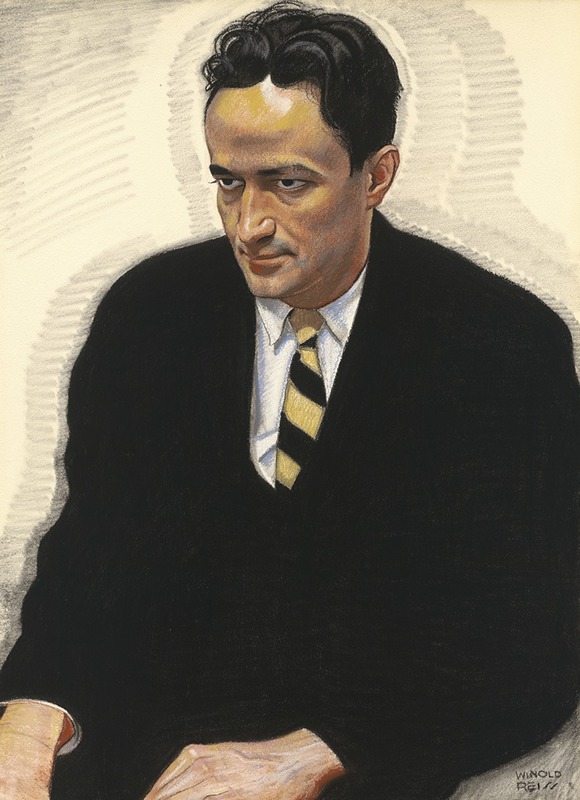
Jean Toomer
A hand-painted replica of Winold Reiss’s masterpiece Jean Toomer, meticulously crafted by professional artists to capture the true essence of the original. Each piece is created with museum-quality canvas and rare mineral pigments, carefully painted by experienced artists with delicate brushstrokes and rich, layered colors to perfectly recreate the texture of the original artwork. Unlike machine-printed reproductions, this hand-painted version brings the painting to life, infused with the artist’s emotions and skill in every stroke. Whether for personal collection or home decoration, it instantly elevates the artistic atmosphere of any space.
"Jean Toomer" by Winold Reiss is a notable portrait created in 1925. Winold Reiss, a German-American artist, is renowned for his vibrant and expressive portraits, particularly those depicting African American and Native American subjects. This particular work features Jean Toomer, an influential African American writer and poet best known for his book "Cane," which is considered a seminal work in the Harlem Renaissance.
Reiss's portrait of Toomer is celebrated for its vivid use of color and its ability to capture the intellectual and introspective nature of the writer. The portrait is a striking example of Reiss's skill in blending modernist techniques with a deep sensitivity to his subjects' cultural and personal identities. The use of bold lines and rich colors in the portrait reflects Reiss's background in German Expressionism, while also highlighting his commitment to portraying the dignity and complexity of African American life.
Jean Toomer, born Nathan Pinchback Toomer on December 26, 1894, in Washington, D.C., was of mixed racial heritage and often explored themes of identity and race in his work. His most famous work, "Cane," published in 1923, is a collection of poems and short stories that depict the lives of African Americans in both the rural South and urban North. The book is noted for its innovative structure and lyrical prose, and it played a significant role in the Harlem Renaissance, a cultural movement that celebrated African American artistic and intellectual achievements during the 1920s and 1930s.
Reiss's portrait of Toomer is not only a testament to the writer's significance but also an example of the cross-cultural collaborations that were a hallmark of the Harlem Renaissance. Reiss, who immigrated to the United States in 1913, became deeply involved in the Harlem art scene and was one of the few white artists to be embraced by the African American community. His portraits of prominent African American figures, including Toomer, Langston Hughes, and Zora Neale Hurston, are valued for their respectful and humanizing representations.
The portrait of Jean Toomer by Winold Reiss is housed in the National Portrait Gallery, part of the Smithsonian Institution in Washington, D.C. It remains an important piece in the collection, offering insight into the interconnected worlds of art and literature during a pivotal period in American history. The collaboration between Reiss and Toomer exemplifies the spirit of the Harlem Renaissance, where artists and writers from diverse backgrounds came together to challenge stereotypes and celebrate the richness of African American culture.
In summary, "Jean Toomer" by Winold Reiss is a significant portrait that captures the essence of an important literary figure of the Harlem Renaissance. The work is a testament to Reiss's artistic talent and his commitment to portraying the dignity and complexity of his subjects, while also highlighting the collaborative and cross-cultural nature of the Harlem Renaissance.





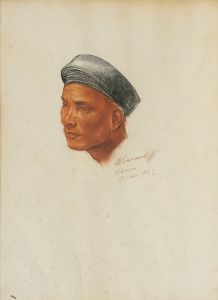
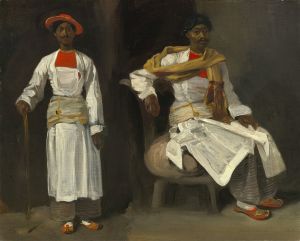
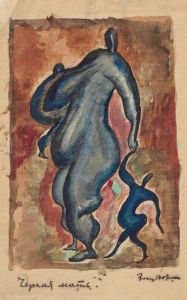
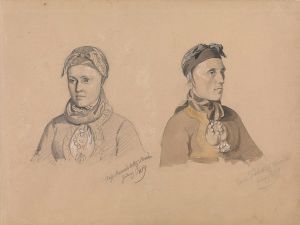
![Graphic design for Photo Engravers Convention, Chicago.] [Poster featuring cartoon-like storks](/imgs/249252/s/winold-reiss-graphic-design-for-photo-engravers-convention-chicago-poster-featuring-cartoonlike-storks-9f0255ed.jpg)
![Design for dčor of restaurant, 56 East 56th St, New York, NY.] [Drawing of suggested dčor for restaurant with color elevation and murals](/imgs/249282/s/winold-reiss-design-for-dcor-of-restaurant-56-east-56th-st-new-york-ny-drawing-of-suggested-dcor-for-restaurant-with-color-elevation-and-murals-29535340.jpg)
![Designs for theater with black-framed proscenium and boldly colored settings.] [Study for stage light wall decoration, possibly for Caf ̌Crillon ….](/imgs/249332/s/winold-reiss-designs-for-theater-with-blackframed-proscenium-and-boldly-colored-settings-study-for-stage-light-wall-decoration-possibly-for-caf-crillon--84fb4ba6.jpg)


